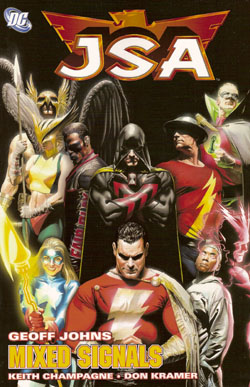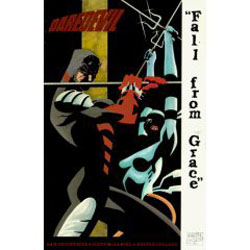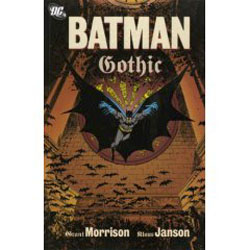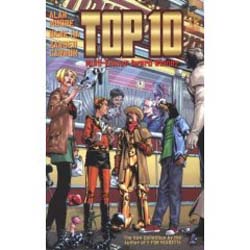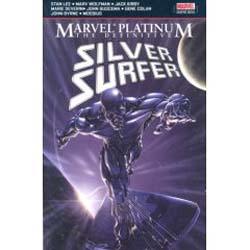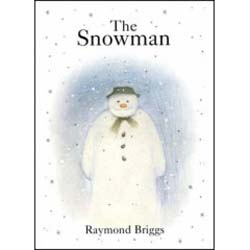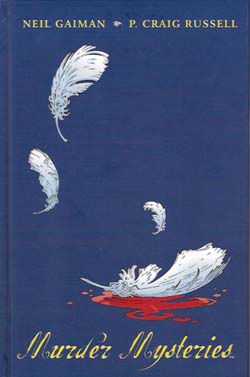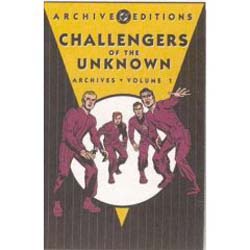DC ARCHIVE EDITION
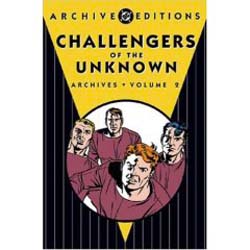
By Jack Kirby & various (DC Comics)
ISBN 1-4012-0153-9
This second, final collection of Jack Kirby’s groundbreaking mystery/adventure concept sees the first fantastic foursome crush villains and monsters, voyage to distant worlds, exotic lands and even crack the time-barrier. The Challengers would follow the Kirby model until cancellation in 1970, but due to a dispute with Editor Jack Schiff the writer/artist resigned at the height of his powers, so this volume only reprints issues #3 – 8 (August/September 1958 – June/July 1959). The series was continued by writers France “Ed†Herron, Dave Wood, Bill Finger plus others and drawn for almost its entire initial run by the superb and criminally underrated Bob Brown.
We kick off with the eerie ‘Secret of the Sorcerer’s Mirror’ with wife Roz and Marvin Stein again inking his mesmerising drawings, as the team pursue a band of criminals whose magic looking glass can locate deadly ancient weapons, but the most intriguing tale for fans and historians is undoubtedly ‘The Menace of the Invincible Challenger’ wherein team strongman Rock Davis is rocketed into space only to crash back to Earth with strange, uncanny powers.
For years the obvious similarities of this group – and especially this adventure – to the origin of Marvel’s Fantastic Four (FF #1 was out in November 1961) have fuelled speculation. In all honesty I simply don’t care. They’re both similar and different but equally enjoyable so read both. In fact, read them all.
With the fourth issue the series becomes artistically perfect as the sheer brilliance of Wally Wood’s inking elevated the art to unparalleled heights. The scintillant sheen and limpid depth of Wood’s brushwork fostered an abiding authenticity in even the most outrageous of Kirby’s designs and the result was breathtaking. ‘The Wizard of Time’ is a full length masterpiece as a series of bizarre robberies leads the team to a scientist with a time-machine. By visiting oracles of the past he has found a path to the far future. When he gets there he’s going to rob it blind unless the Challengers can stop him.
‘The Riddle of the Star-Stone’ is a contemporary full-length thriller. An archaeologist’s assistant uncovers an alien tablet which will bestow various super-powers when different gems are inserted into it. The exotic locales and non-stop spectacular action are intoxicating, but Kirby’s solid characterisation and ingenious writing are what make this such a compelling read.
Dave Wood returns to script #6’s first story. ‘Captives of the Space Circus’ sees the boys kidnapped from Earth to perform in a interplanetary show, but the evil ringmaster is swiftly outfoxed and the team returns for Ed Herron’s mystic saga ‘The Sorceress of Forbidden Valley’, wherein June Robbins becomes an amnesiac puppet in a power struggle between a fugitive gangster and a ruthless feudal potentate.
There are also two stories in #7. Herron scripted both the relatively straightforward alien-safari tale ‘The Beasts From Planet 9’ and the much more intriguing ‘Isle of No Return’ where the team have to defeat a scientific bandit before his shrinking ray leaves them permanently mouse-sized. Issue #8 is a magnificent finale to a superb run as Kirby and Wally Wood go out in style in two gripping spectaculars (both of which introduced menaces who would return to bedevil the team in future tales).
‘The Man Who Stole the Future’ by Dave Wood, Kirby and the unrelated Wally Wood, introduces Drabny – a mastermind who steals mystic artefacts and takes over a small country before the team defeats him. This is a tale of spectacular battles and uncharacteristic, if welcome, comedy, but the real gem is the science fiction tour-de-force ‘Prisoners of the Robot Planet’, with art by the Kirby and Wood, but for which the writer is regrettably unknown. Petitioned by a desperate alien, the team travels to his distant world to liberate the population from bondage to their own robotic servants, who have risen in revolt under the command of the fearsome automaton, Kra.
These are classic adventures, told in a classical manner. Kirby developed a brilliantly feasible concept with which to work and heroically archetypical characters in cool pilot Ace Morgan, indomitable strongman Rocky Davis, intellectual aquanaut Prof. Haley and daredevil acrobat Red Ryan. He then manipulated an astounding blend of genres to display their talents and courage in unforgettable exploits that informed every team comic that followed and certainly influenced his successive and landmark triumphs with Stan Lee.
But above and beyond all that, his Challengers of the Unknown run is sheer escapist wonderment, that no fan of the medium should miss.
© 1958, 1959 DC Comics. All Rights Reserved.
